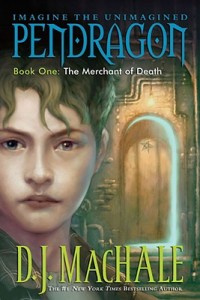The Alchemyst: The Secrets of the Immortal Nicholas Flamel
by Michael Scott, Delacorte Press, 2007, 369 pages.
Worldview: Darwinian atheism.
Style: A high-action, imaginative story with memorable characters that will draw your kids in.
Review: An Elder Race used to live on the earth, while humans were still hanging out in trees. These elders, who have magical powers, are divided into Dark Elders and others. The Dark Elders would like to return to power, enslaving or killing the human race. Their puppet is the human villain, Dr. John Dee.
This story has a strong hook: it mentions the Immortal Nicholas Flamel on the cover. Flamel is one of the characters in the Harry Potter stories, but he wasn’t invented by J.K. Rowling. Instead, Rowling took a legend and based a character on it. Scott has done the same. Scott’s cover also looks faintly like one of the symbols featured in the Potter books (the Deathly Hallows).
Nicholas and Perenelle Flamel are legendary French individuals, born in the 1300s, supposed to have found the secret of immortality. In Scott’s tale, Flamel becomes mentor to American teenage twins Josh and Sophie Newman as the result of a struggle described in the opening scene of the book. In the struggle, Dr. John Dee and his henchmen rob Flamel of his magic book, except for two critical pages.
As the story unfolds, Dee is pursuing Flamel and the twins. The twins find out they have powers and are the subjects of a prophecy about powerful twins. Flamel takes Sophie to an Elder One to have her powers awakened. Josh has to wait till the next book (when his powers are awakened by a Dark Elder).
The central characters are clearly the twins. They are motivated by loyalty to friends and to each other, a tribal sort of morality rather than a Biblical one. One of the main themes involves the question of Josh’s attraction to the dark side. We’ve heard this one before. The kids lie to their parents about where they are. The author excuses this by implying the parents wouldn’t believe them.
This book and its sequels will probably draw the attention of your teen at some point. My 16-year-old fantasy fan was drawn to them. Be sure to discuss the atheist viewpoint.–Phyllis Wheeler
![]()


